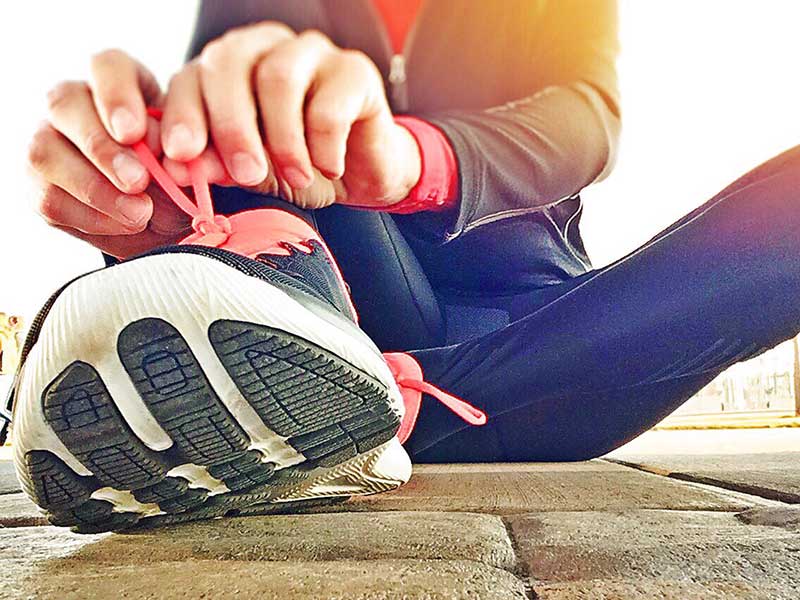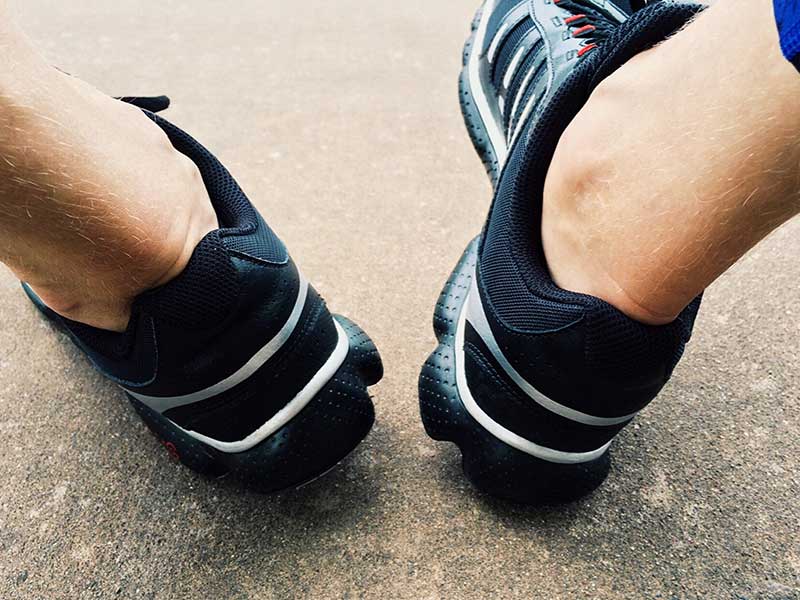Reducing injuries, the key to the evolution of sports footwear?

The evolution of sports footwear over the course of the last few decades has shown great leaps and bounds that reflect the changes it has undergone in its design. Just as technology has a direct impact on practically all spheres of human endeavour, it is also constantly bringing innovations to sports equipment that aim to improve sports practice and performance and reduce injuries, among other benefits.
However, it is worth noting that the findings of human remains of great antiquity have demonstrated that the foot has not shown any particular signs of evolution for at least two million years.Our feet today are virtually identical to those of our earliest ancestors.
![Photo: Georg Hermann von Meyer [CC0].](https://travesiapirenaica.b-cdn.net/wp-content/uploads/2018/12/Georg-Hermann-von-Meyer-Public-domain_800x600.jpg)
The evolution of sports footwear: some interesting facts
The first shoe
In an archaeological site in Armenia, at least 5,500 years old, what is known to be the first human shoe has been found.
It is a simple leather pouch with which the foot was wrapped, tied over it with a delicate system of strings. Although scientists have estimated the age of the piece, it is quite possible that even long before that date, humans who inhabited the planet protected their feet and bodies in some way from the inclemency of the weather.
Human beings are distinguished from other species with which we share the planet by a large number of characteristics. Among many others, we have been wearing clothes and footwear since the earliest times.

While it is true that in ancient times the main function of the clothing was associated with survivalThe shoe has evolved with distinct and specific functionalities. Let's take a look at how running shoes have evolved over the last decades.
1960
By the 1960s, the footwear used for racing was mainly characterised by the following features ultraminimalist. By this we mean a type of shoe with no "drop", this being understood as the difference between the height of the sole of the shoe in the heel area and the forefoot area.
During the evolution of sports footwear In those years, racing shoes had the characteristic of being extremely flexible and without any cushioning.
1970
Even after ten years had passed, running shoes remained much the same. That is, athletes continued to wear the same shoes as in the previous decade: ultra-minimalist, with no drop or cushioning but extremely flexible.
1980
By the 1980s, some changes in shoes designed for runners arrived. Even though it is still an eminently minimalist type of footwear, the shoes gain a little in thickness and a new element arrives: the cushioning.
Another fact is that during the 1980s, athletes competed and trained in the same shoes.
1990
Finally, the evolution of sports footwear is modified by technology: the shoes begin to have a rigid calcaneal dome specially designed for pronation control.
It should be noted that the pronationDuring that time, it was considered a cause of injury.
Another detail of the running shoes of that decade is the incursion of designs that incorporated more colours into the shoes.
2000
In the first decade of the new millennium, boom is cushioning in running shoes.
In the same decade, specifically in 2008, shoes with drops of up to 22 millimetres appeared.

2016
This year in some ways marks a milestone in the technology applied to sports footwear.
The raised heel allows for a "drop". In some models it can be particularly pronounced, up to 22 millimetres.
Other features of the running shoe are the cushioned sole and the calcaneal stabiliser. In addition, running shoes incorporate the use of pronation control technology.
They also have a particularly rigid sole and a stabilising upper, elements designed to "guide" the foot. They also have a shock-absorbing sole.
Coincidences and similarities in the evolution of sports footwear
The shoes of the 1960s share many characteristics with today's racing shoes.
In all kinds of running competitions, the shoes of the 60s look very similar.
Competition shoes for track, semi-distance and long-distance are quite similar.
Reducing injuries, the key to the evolution of sports footwear?
While technology works incessantly to achieve advances in all areas, the work in the sports area is also noteworthy. In this case, the goal is to reduce the incidence of running injuriesThis has not yet been achieved to 100%.
One trend that has driven the evolution of running shoes from the 1990s to the present day is the importance of pronation. In the 1990s, the design of running footwear changed with the idea of limiting pronation, which was seen as a tendency that would cause injury to the runner.
Unless the runner suffers from overpronation or oversupination, there is no established consensus on whether pronation causes injury and, consequently, whether running shoes should limit it.
A trend that is gaining momentum at present is that running technique is more important than footwearSo, with correct technique, it is possible for the runner to remain injury free, regardless of the shoe used. The important thing, in this case, is to wear a sports shoes that are comfortable for the runner.
Don't miss any adventure in the Pyrenees!
